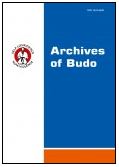2011, Volume 7, Issue 4
The correlation of general and sport-specific preparation indices of elite female judo competitorswith their age-somatic characteristics
Walerij Smulski1, Beata Wolska2, Władysław Jagiełło2, Stanisław Sawczyn2
1Berdyansk State Pedagogical University, Berdyansk, Berdyansk, Ukraine
2Academy of Physical Education and Sport in Gdańsk, Gdańsk, Gdańsk, Poland
Author for correspondence: Walerij Smulski; Berdyansk State Pedagogical University, Berdyansk, Berdyansk, Ukraine; email: walerij7[at]ukr.net
Full text
Abstract
Background and Study Aim: The purpose of this work was to determine the correlation between indices of the general and sport-specific preparation with the age-somatic parameters of elite female judo competitors during the preparation to the competitive period.
Material and Methods: Eleven senior female judo competitors – members of the Olympic and National Teams in judo participated in the study. Their average age was 25.2±3.7 years, and athletic experience – 14.2±4.0 years. To determine the somatic features - body height, body mass index (BMI) and body components: FATkg, FAT%, FFMkg, FFM%, TBWkg, TBW% – the Body Composition Analyser was used. To assess sport-specific preparation the standard IPFT test was used. The level of sport-specific preparation of athletes was assessed by Sterkowicz’s test (SJFT).
Results: The female judo competitors who have lower body weight, smaller values of BMI, absolute and percentage values of the fatty component, the absolute indices of fat-free and a liquid component of body mass, but a higher percentage of the latter two components, perform better in all IPFT running tests. Of the IPFT power performance test only the “maximum amount of the trunk slopes from the supine position for 30 s” index showed a statistically significant correlation with body length of the female judo competitors, as well as with the content of fat in their body mass. In this case, female athletes who had a smaller body length and lower absolute content of the fat-free component in it showed the best results. The athletes who had a smaller body length as well as lower absolute content fat and liquid components in the body demonstrated a higher level of sport-specific preparation in the SJFT test.
Conclusions: The presented data are considered from the standpoint of their significance and prospects of their use in future studies related to the problem of improving the effectiveness of the training process of the female judo competitors at different stages of long-term preparation.
Key words: female judo, physical preparation, somatic characteristics




